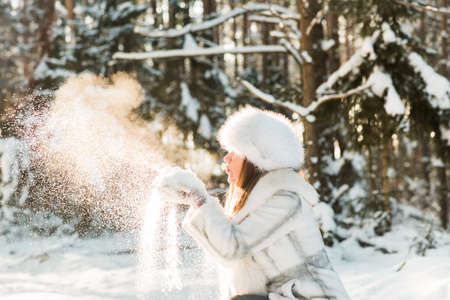Understanding American Winter Challenges
When winter rolls around in the United States, your skin faces a unique set of challenges that go far beyond just dropping temperatures. The combination of low humidity, biting cold winds, and the near-constant use of indoor heating systems can wreak havoc on every skin type—from naturally oily to ultra-sensitive. Unlike some regions where winters are milder or more humid, American winters are known for their dry air, especially in northern states and cities where heaters work overtime. This harsh environment strips away your skin’s natural moisture barrier, often leaving it feeling tight, flaky, or irritated. For people with already dry or sensitive skin, these effects can be even more pronounced, while those with oily or combination skin may notice unexpected dryness or imbalances. Understanding these regional specifics is key to creating a winter skincare routine that truly protects and nourishes your skin throughout the colder months.
2. Hydration Starts from Within
When it comes to surviving the dry and often brutal American winters, what you put inside your body can be just as important as what you put on your skin. While slathering on moisturizer is essential, keeping your skin hydrated begins with staying properly hydrated yourself. In winter, it’s easy to forget to drink enough water because you may not feel as thirsty, but indoor heating and chilly winds sap moisture from your body faster than you might think.
Why Water Matters More in Winter
Drinking plenty of water helps maintain your skin’s elasticity and prevents that uncomfortable tightness or flakiness many people experience during colder months. Aim for at least 8 cups of water a day, but remember that everyone’s needs are different—listen to your body!
Eat Your Way to Healthy Skin
Your diet plays a huge role in how your skin copes with winter stress. Foods rich in antioxidants, healthy fats, vitamins, and minerals can give your skin the building blocks it needs to repair and defend itself against harsh elements. Focus on seasonal produce and nutrient-dense options that are easy to incorporate into classic American winter meals.
Winter-Friendly Foods for Skin Health
| Food | Nutrient Benefit | How It Helps Your Skin |
|---|---|---|
| Avocado | Healthy Fats & Vitamin E | Keeps skin supple and moisturized |
| Sweet Potatoes | Beta-Carotene & Vitamin C | Supports skin repair and glow |
| Nuts (Almonds, Walnuts) | Omega-3 Fatty Acids | Reduces dryness and inflammation |
| Citrus Fruits (Oranges, Grapefruit) | Vitamin C | Boosts collagen production for resilience |
| Salmon & Fatty Fish | Omega-3s & Protein | Strengthens skin barrier function |
Pro Tip: Infuse Your Water!
If plain water doesn’t excite you, try adding slices of lemon, cucumber, or berries for a burst of flavor and extra nutrients. Sipping herbal teas is also a cozy way to stay hydrated while warming up during snowy days. Remember: keeping your skin healthy this winter isn’t just about what you do on the outside—it’s about nourishing yourself from within.

3. Choosing the Right Moisturizer
When it comes to battling harsh American winters, picking the right moisturizer is key to keeping your skin healthy and hydrated. Cold climates strip away natural oils, leaving skin feeling tight, flaky, and uncomfortable. To combat this, opt for rich, emollient moisturizers that provide deep hydration and create a protective barrier against frigid air and indoor heating.
Look for Emollients and Humectants
For ultimate winter protection, seek out products containing emollients like shea butter, squalane, or ceramides. These ingredients help lock in moisture and repair your skin’s barrier. Humectants such as glycerin and hyaluronic acid are also excellent because they draw water into the skin, giving you that plump, refreshed feeling even when it’s freezing outside.
Consider Sensitive Skin Needs
If your skin is on the sensitive side—a common concern among many Americans—be sure to choose fragrance-free and hypoallergenic formulas. Avoid harsh additives and alcohols that can worsen dryness or trigger irritation during winter months. Look for labels that mention “for sensitive skin” or “dermatologist-tested” to ensure your moisturizer is gentle enough for daily use.
Rich Creams Over Lotions
During winter, lightweight lotions often don’t cut it. Instead, go for thicker creams or ointments that provide long-lasting coverage. Apply immediately after bathing or washing your face to seal in moisture before the dry air has a chance to work its magic on your skin.
Remember, everyone’s skin is unique—what works for one person may not work for another. Don’t be afraid to experiment with different textures and ingredients until you find what feels best for you. Taking the time to choose the right moisturizer tailored to American winter conditions will make all the difference in keeping your skin soft, comfortable, and resilient all season long.
4. Protecting Skin Outdoors
When winter hits hard across the U.S., stepping outside can be a real challenge for your skin. The combination of icy winds, low humidity, and sudden temperature changes between heated indoors and frosty outdoors can leave your skin feeling dry, tight, and even cracked. Here’s how you can keep your skin protected while enjoying all the beauty of an American winter.
Layer Up with Smart Fabrics
Just like you layer your clothes to stay warm, consider how those layers affect your skin. Choose soft, breathable fabrics—think cotton or moisture-wicking blends—for the layers closest to your skin. Avoid scratchy wools or synthetics that might irritate sensitive areas.
| Layer Type | Recommended Material | Why It Helps |
|---|---|---|
| Base Layer | Cotton or Bamboo | Soft and gentle, reduces irritation |
| Mid Layer | Fleece or Wool (over clothes) | Insulates and retains heat |
| Outer Layer | Water-resistant Shell | Protects from wind and snow |
Don’t Forget Scarves and Gloves
Your neck, cheeks, and hands are especially vulnerable in winter weather. Wrapping up in a scarf not only keeps you warm but also shields exposed skin from biting winds and airborne pollutants. Opt for gloves made from soft materials lined with fleece or cotton to prevent chafing and dryness.
Sunscreen Isn’t Just for Summer
This is a common misconception in the U.S.—winter sun can be just as damaging as summer rays, especially with reflective snow amplifying UV exposure. Always apply a broad-spectrum sunscreen (SPF 30 or higher) to all exposed areas: face, ears, neck, and hands.
| Area Exposed | Sunscreen Needed? | Extra Tips |
|---|---|---|
| Face & Ears | Yes (SPF 30+) | Lip balm with SPF too! |
| Neck & Chest | Yes (SPF 30+) | Reapply every 2 hours outdoors |
| Hands & Wrists | Yes (SPF 30+) | Cream-based sunscreens last longer in cold weather |
Your Winter Outdoor Skincare Checklist:
- Dress in layers using soft, non-irritating fabrics close to your skin.
- Wrap up with scarves and gloves before heading out.
- Apply sunscreen on all exposed areas—even when it’s cloudy or snowy.
- Keep a travel-sized moisturizer in your bag for touch-ups after washing hands or exposure to wind.
Taking these simple steps will help ensure your skin stays hydrated, comfortable, and protected no matter how harsh the American winter gets!
5. Smart Indoor Skincare Habits
During the winter months, spending more time indoors doesn’t always mean your skin is safe from dryness. In fact, central heating systems—a staple in many American homes—can strip moisture from the air, leaving your skin feeling tight, flaky, and dehydrated. To combat this, it’s essential to adopt smart skincare habits tailored for your indoor environment.
Be Mindful of Central Heating
While it’s tempting to keep your home warm and cozy, blasting the heat can lower humidity levels indoors. Dry air pulls moisture from your skin, so try to keep the thermostat at a moderate temperature. Layer up with comfy clothes and blankets instead of cranking up the heat all day long.
Use a Humidifier
One of the best ways to counteract dry indoor air is by using a humidifier. Placing one in your bedroom or living space can help maintain optimal humidity levels, which not only benefits your skin but also helps with breathing and overall comfort. Aim for a humidity level between 30-50% for best results.
Choose Gentle Cleansers
The products you use on your skin matter even more during winter. Harsh soaps and cleansers can strip away natural oils that protect your skin barrier. Opt for gentle, hydrating cleansers that are fragrance-free and formulated for sensitive or dry skin types. Avoid over-cleansing—once a day may be enough if you’re not getting sweaty or dirty.
By making small adjustments like these to your indoor routine, you can help preserve your skin’s moisture and resilience all winter long—even when those Midwest blizzards or East Coast cold snaps hit hard.
6. Nighttime Skincare Rituals
When it comes to surviving harsh American winters, your nighttime skincare routine is just as important as what you do during the day—if not more! Night is when your skin works overtime to repair and regenerate, making it the perfect opportunity to help your dry winter skin bounce back.
Thick Creams: Your Bedtime Best Friend
If your skin feels tight or flaky by evening, switch out lightweight lotions for rich, nourishing creams before bed. Look for ingredients like shea butter, ceramides, and squalane, which lock in moisture and support your skin’s natural barrier. These thicker formulas create a protective shield against moisture loss while you sleep, helping you wake up with softer, smoother skin.
Overnight Masks: Intensive Hydration While You Sleep
For those nights when your skin needs extra TLC, overnight masks are a total game-changer. Unlike traditional rinse-off masks, these leave-on treatments deliver deep hydration and calming ingredients all night long. Try applying an overnight mask once or twice a week—especially after being exposed to cold winds or indoor heating—to give your skin an intensive moisture boost.
Barrier Protectants: Lock In All The Goodness
The final step in your PM ritual? Seal everything in with a barrier protectant like petrolatum ointment or a balm. This step is especially crucial if you’re prone to cracked hands or lips in the winter. Applying a thin layer on top of your moisturizer helps trap all the benefits from your previous products and prevents trans-epidermal water loss throughout the night.
Pro Tip: Layer Smartly!
Incorporate these steps into a relaxing nighttime routine—think dim lights, soothing music, and maybe even a cup of herbal tea. Your skin (and spirit) will thank you for the extra care during those long American winter nights.

